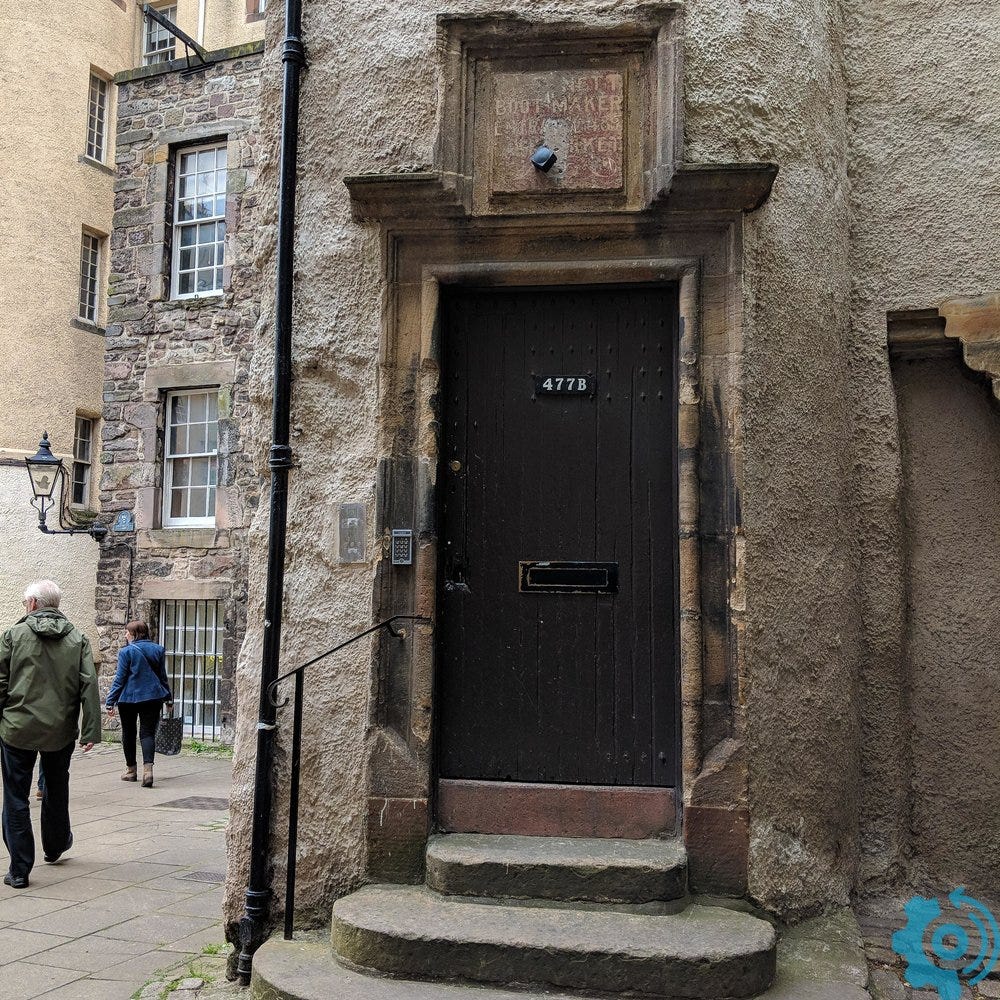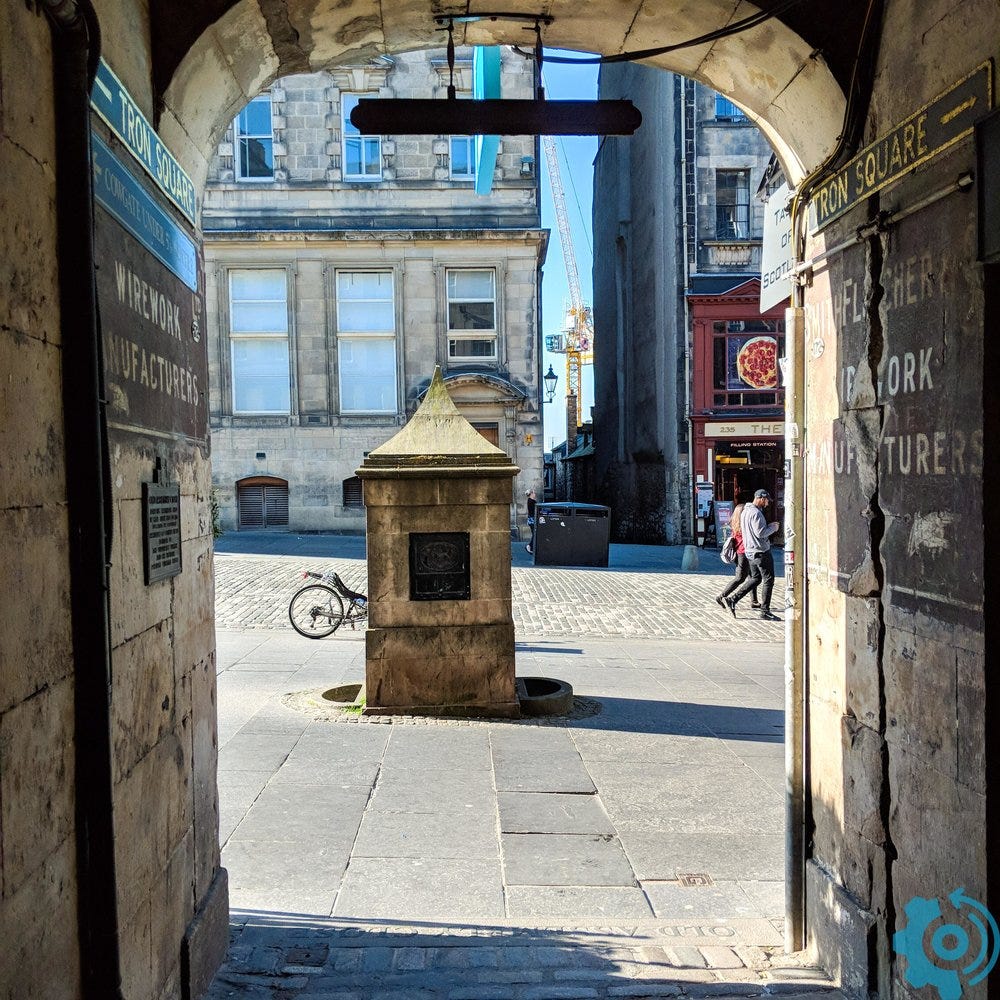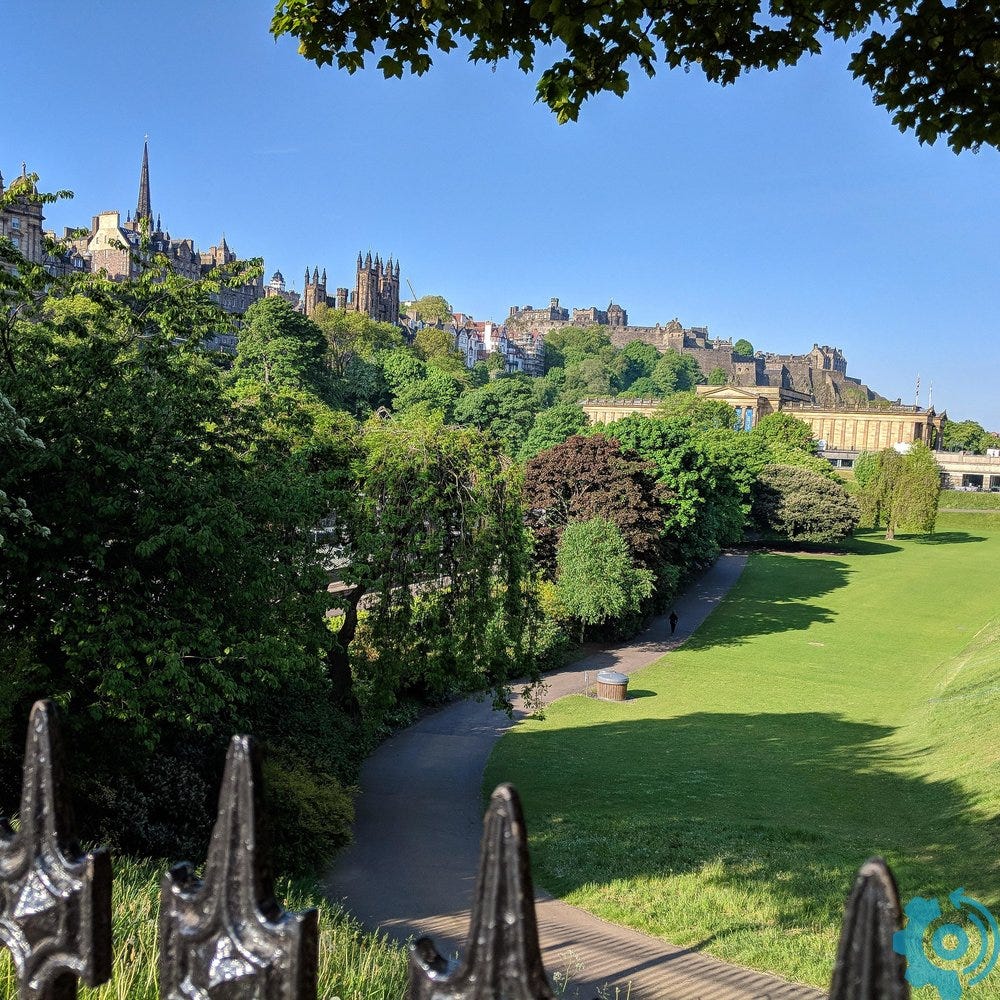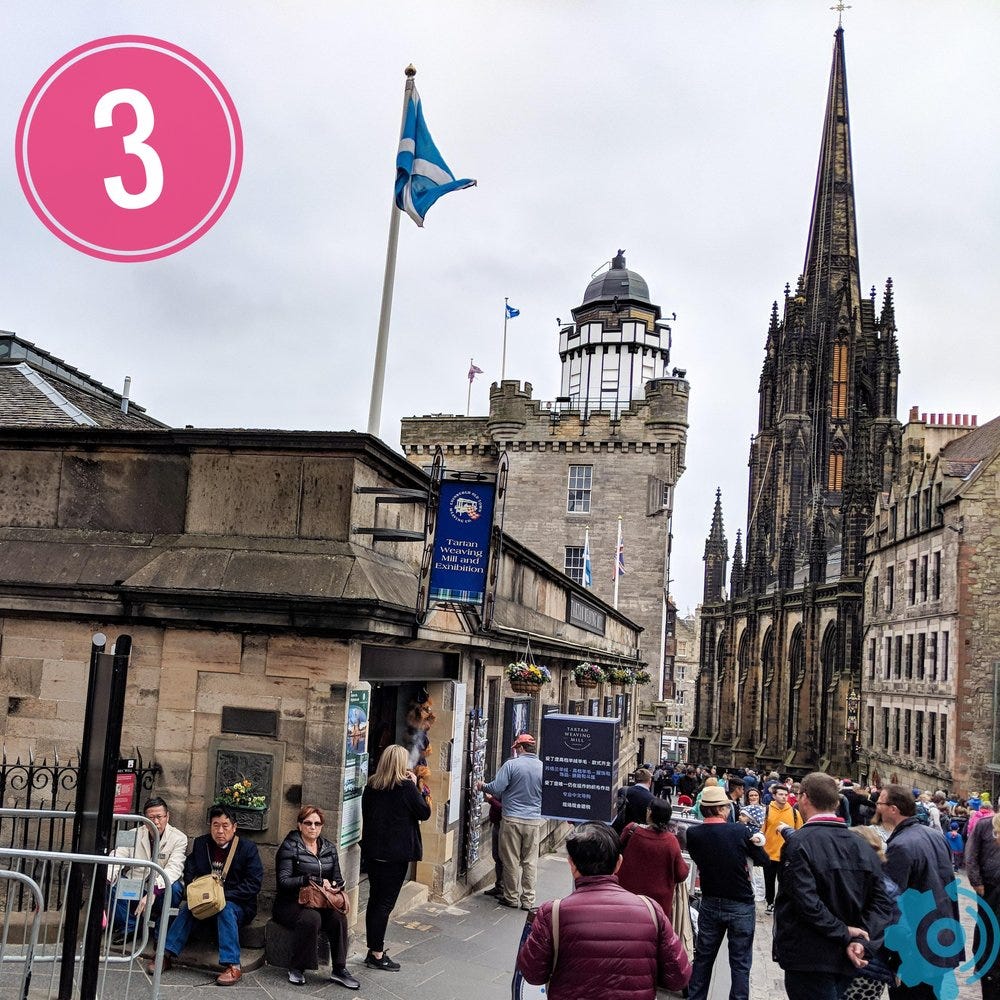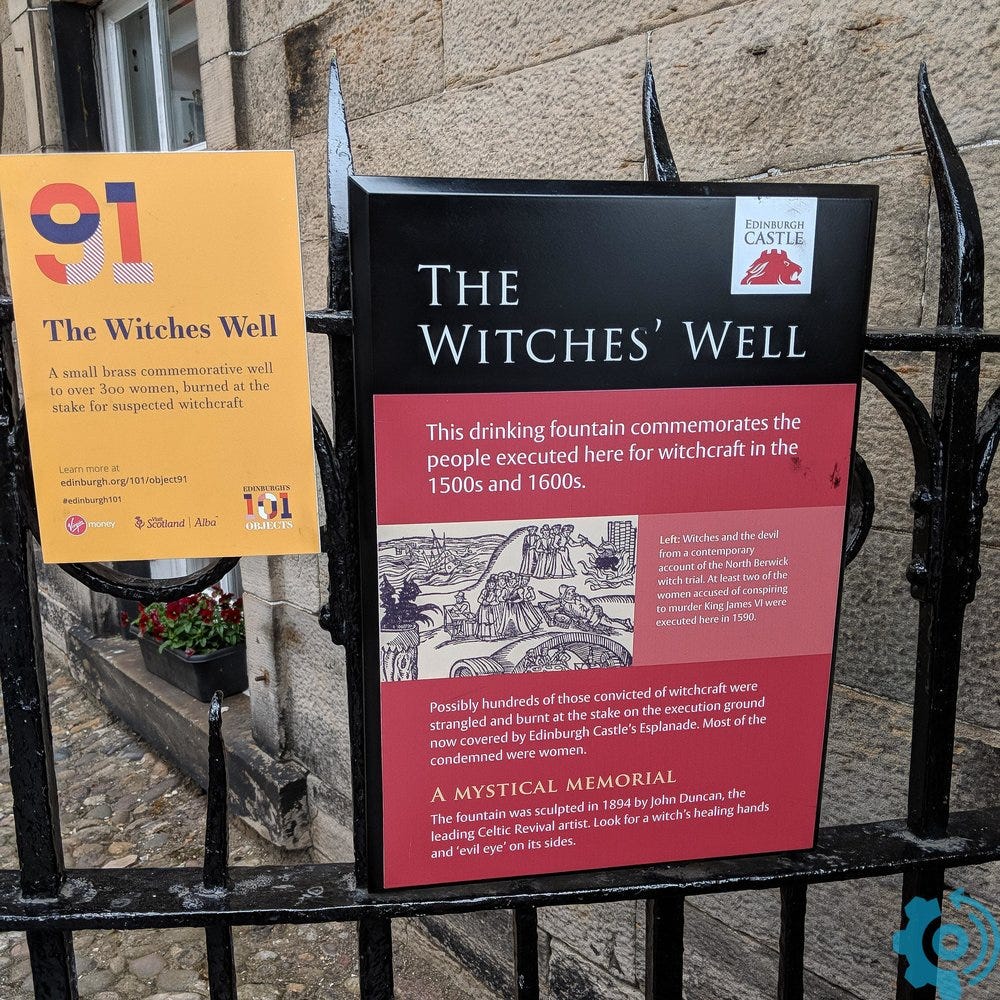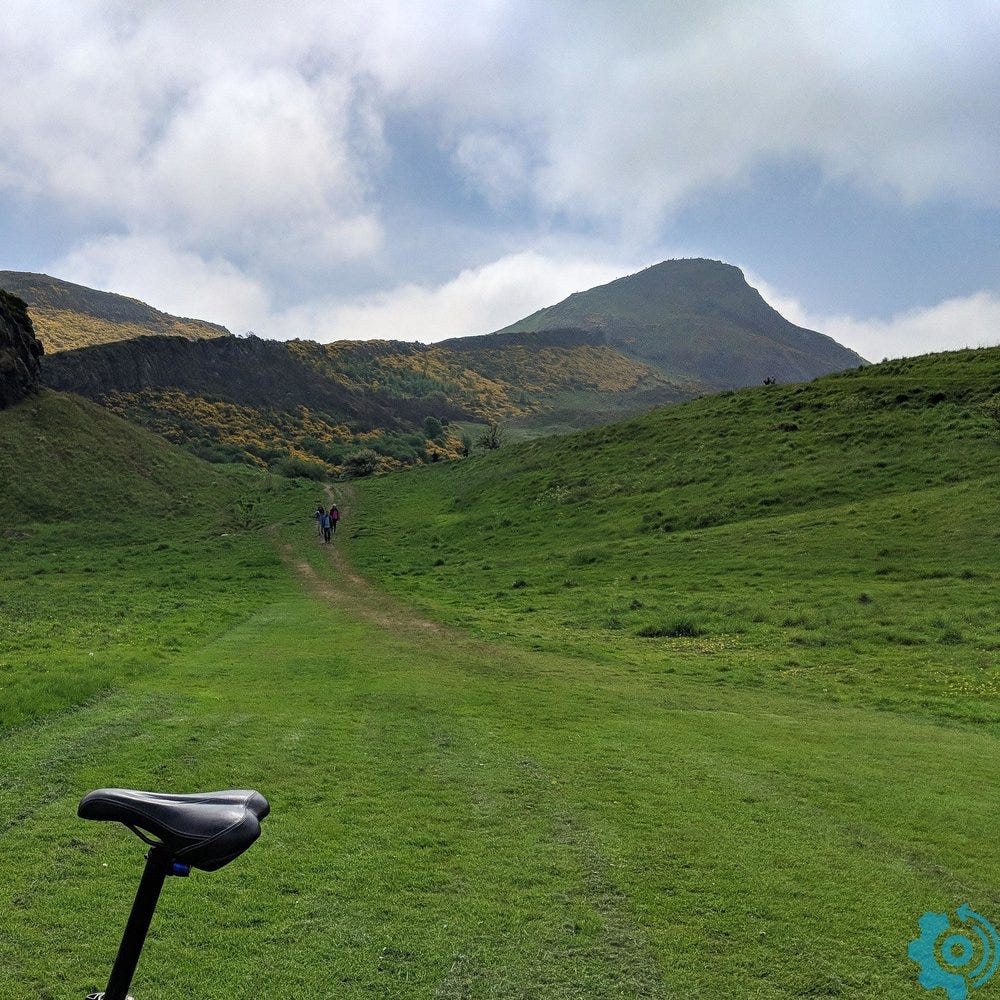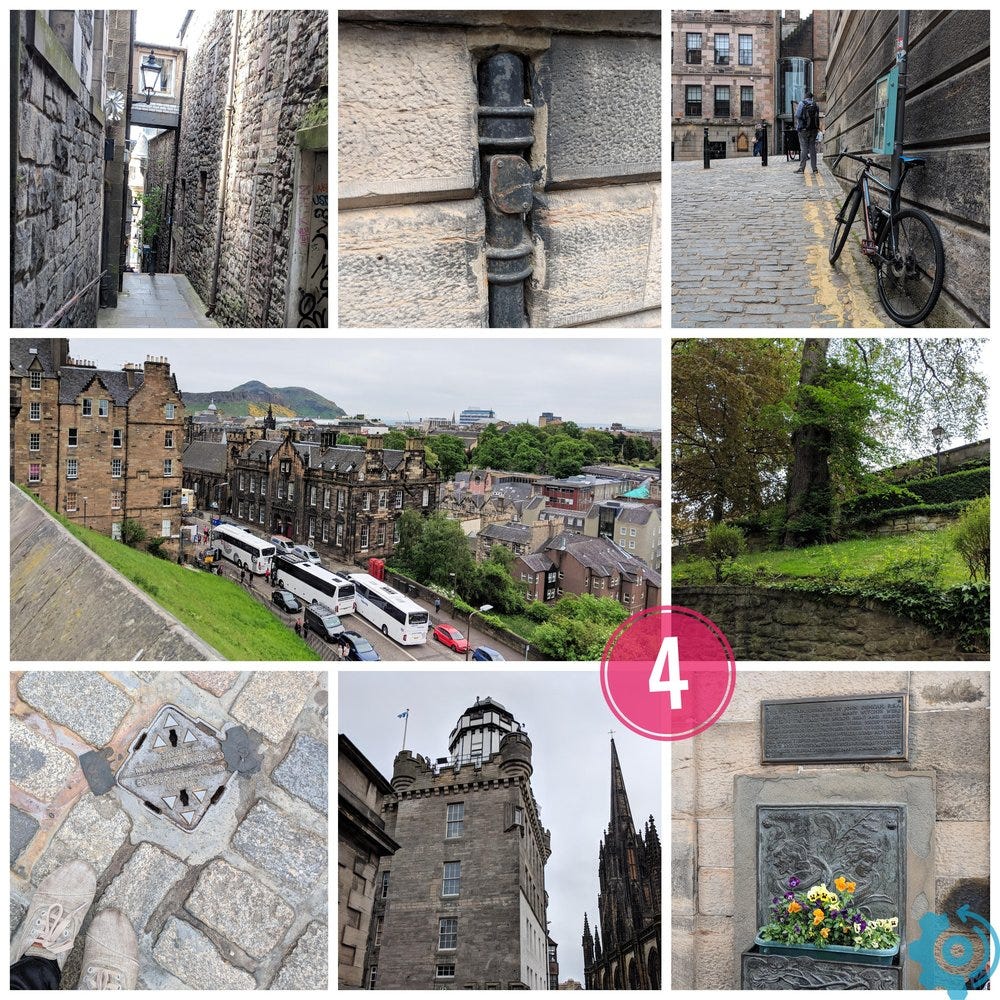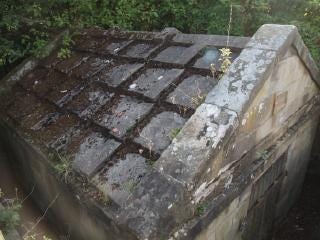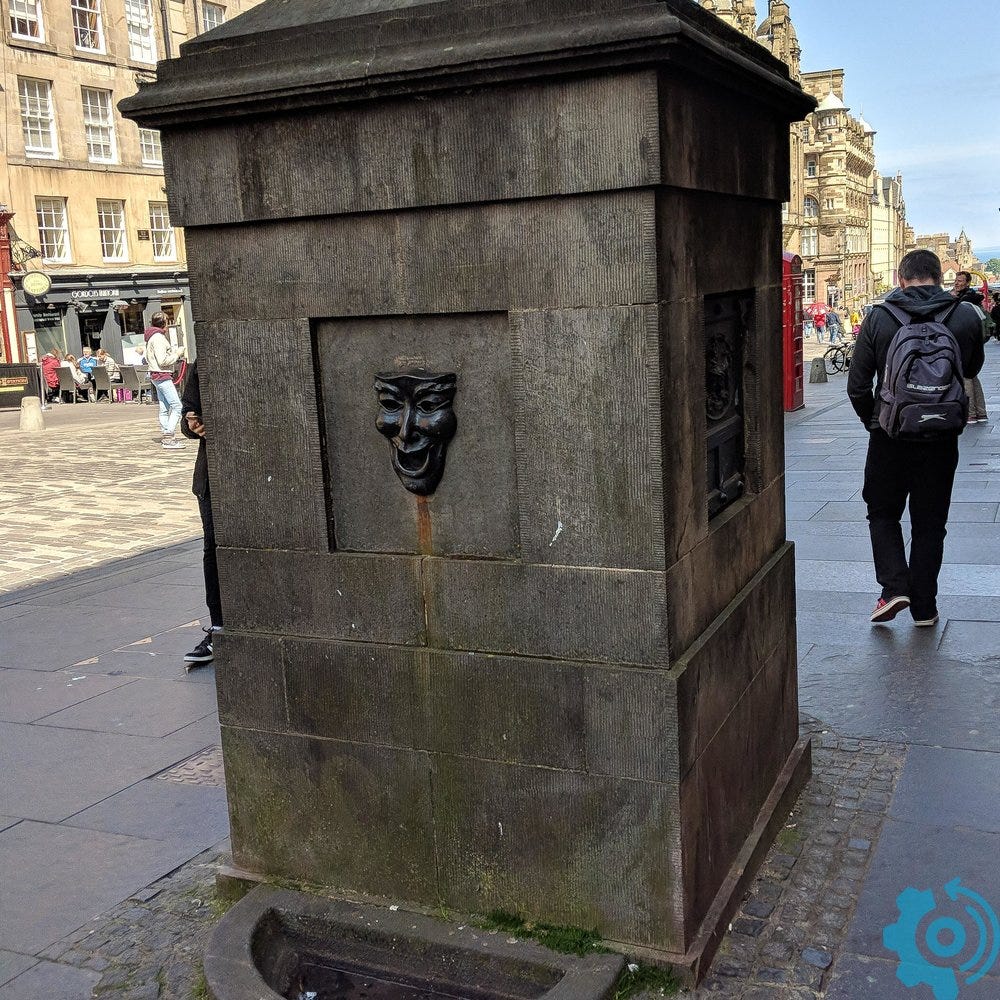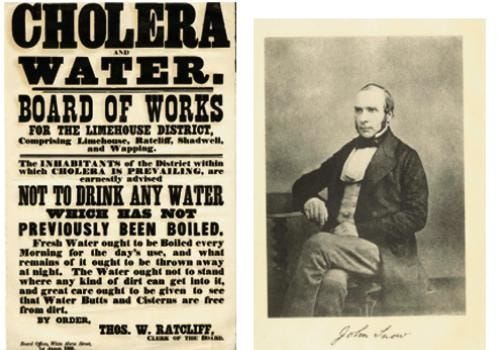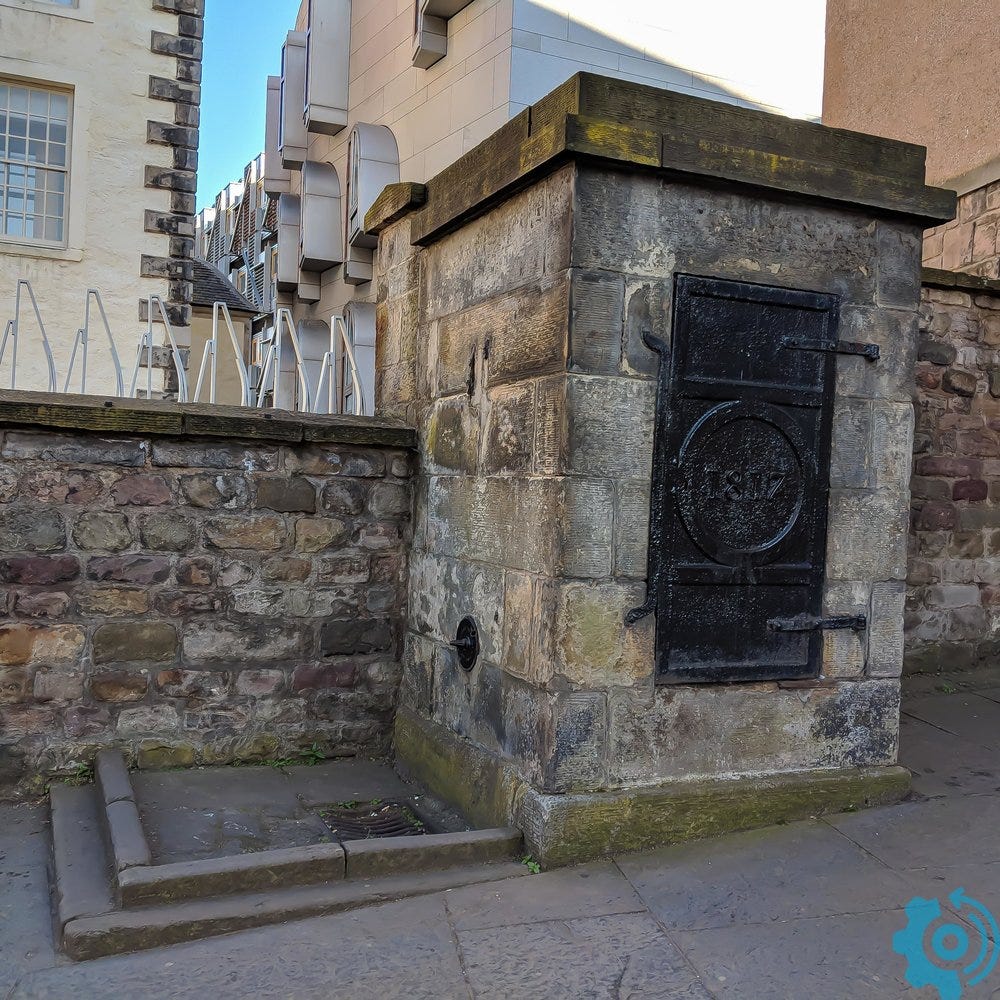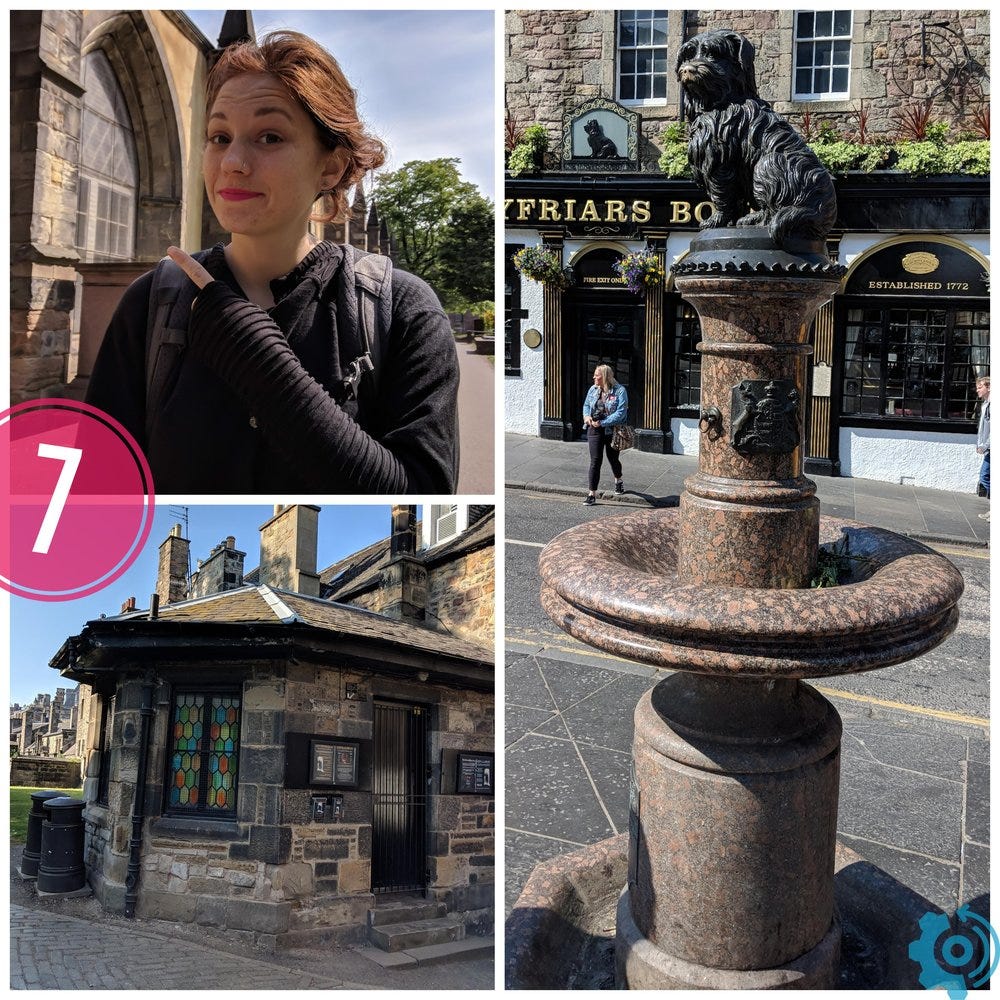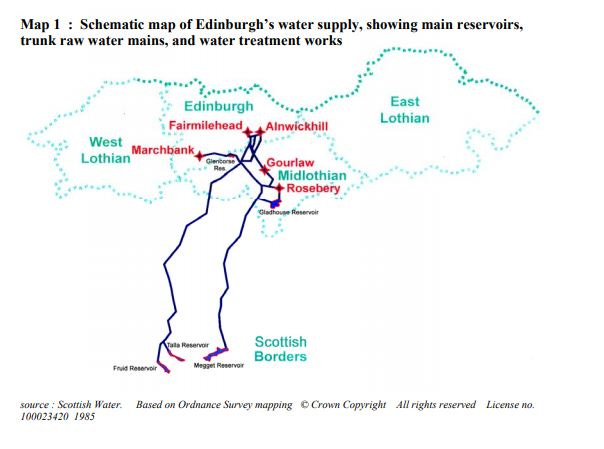Edinburgh Water & Sanitation - Travel Case Study
While I was in Edinburgh I got really excited about the cool medieval water engineering! One of my favorite things to do while I'm solo traveling is to find all the water-related infrastructure. It's a nice theme to a trip. Other themes include:
Dudes who build architecture to look like rocks
Castles on hills, poop downhills
Rocks on rocks in cold places
Witch Basaltings (too much?)

There's so much history to explore. Water is life. Water has driven us to do great things and evil things. So let's time-travel together through medieval Old Town, Edinburgh to today!!
1
In one of my IG posts (@dumontandi), I showed the Nor' Loch (top left pic), which was a marsh that in the 15th C was dammed up and turned into a lake. It's currently the Princes Street Park and a chill place to hang next to Waverly Station. As much as I love the geology of Edinburgh, I wanted to... deep dive ...into the confluence of drinking water and sanitation. The top right pic is a water use point, a little fountain, one of many (okay 12 original) found all over Edinburgh. More on that later.

Side tangent....These are my favorite street types. What's super awesome about these streets is that they're built under buildings. You can sort of tell from this photo below.
close - narrow entry that leads to a courtyard
wynd - narrow lane between houses, side street
street - widened more modern
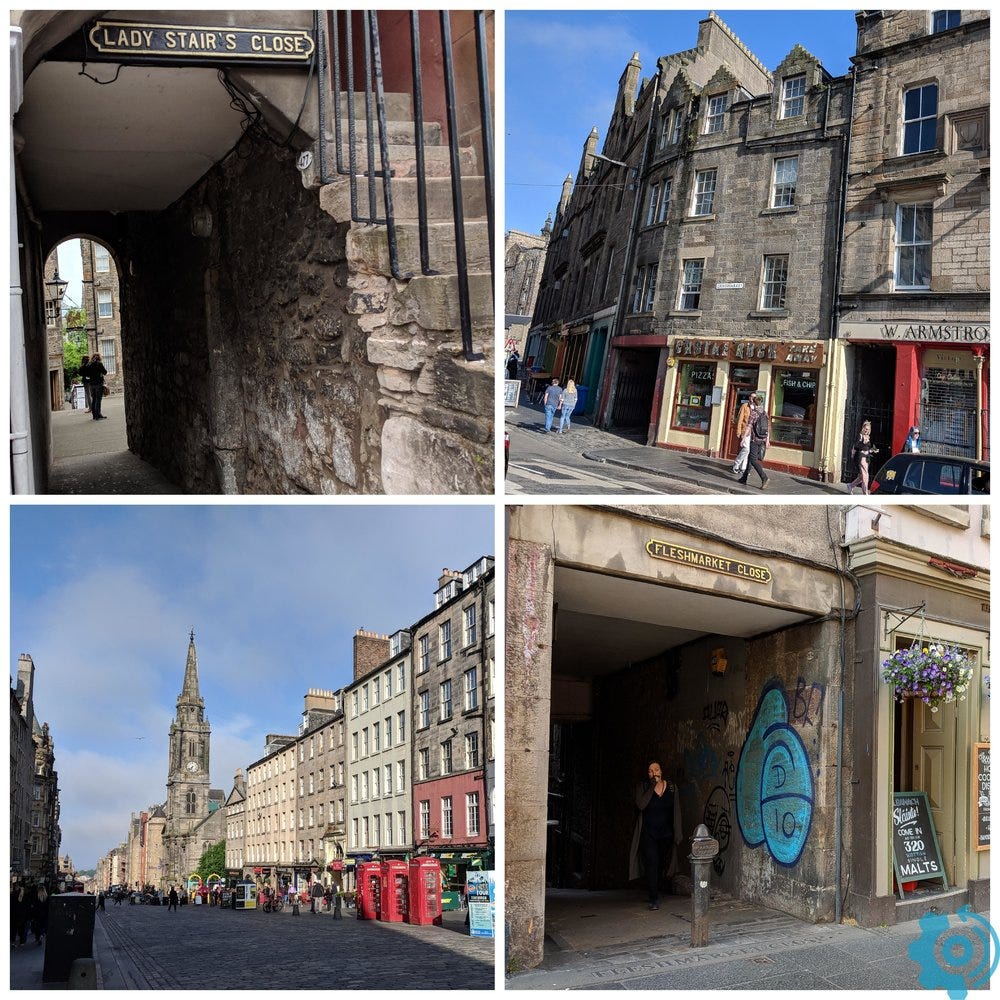
2
Auld Reekie. Back in the day (waaaaaay back in the day) there was no sewer system in Edinburgh. Chamber pots were emptied into the street and we all know that our favorite emoji flows downhill. 💩 Right into the Nor' Loch.
3
Apparently historians debate whether the Nor' Loch was actually used as a drinking water supply but.. it's pretty obvious to this non-historian that it wouldn't last long. Maybe it was the witch dunkings? Or the cholera? Or all the poop. Whatever it was, the city needed a better, bigger water supply!
Notice the little fountain on the left of the building commemorating the spot where women were burned at the stake? Yeah that happened. Obvious characteristics for being a witch include redheads, birthmarks, and third nipples (used to suckle the devil). Obviously.
The building on the left of the picture below was used as a 2MG water tank! It might look small here but there are 5 floors inside. It's now a weaving museum/tartan store on the Royal Mile.
4
In 1676, after 50 years of debate over water tax and 4 years of construction, a network of 3-inch lead pipes channeled spring water from the Comiston Springs to the Old Town. Supplemental water supply was routed there in the 18th C with wooden pipes (think, elm trees hollowed out) from additional springs.
I walked all around looking for something to prove this was a water tank and... nada. I did find a bunch of 3.5-inch ductile iron pipes and some storm drains... I suspect those are much more recent.
The spring box itself sounds pretty sweet. Built in 1676, it transferred 162,000 gpd to the tank on Castle Hill. I only learned about it after my trip so if you head there and find it, send me some pics! It's at the corner of Comiston View and Fox Spring Rise.
I've also since learned about an awesome photo exhibition by a city engineer!
Look at that trench protection.
I'm not going to post the pics because, sadly, they're copyrighted. But they're super cool! The whole image collection by Alexander Leslie is in the Capital Collections library at this link.
https://www.capitalcollections.org.uk
5
Water Stands. From the springs to the spring box to the water tank, the water was then piped to water stands for point of use. There were 12 'wells' around the Old Town with two in their original locations: Grassmarket and John Knox's House.
This Grassmarket Well and was by far my favorite one. Maybe it's my fav because it was located in Diagon Alley. Maybe. #nerdalert
All the literature calls them 'wells' or 'wellheads' but I have such a hard time getting behind that! I'd take spigots, water stands, fountains, POU (point of use), or cisterns. A well is dug into the ground and produces water, John Snow style! #engineerrant
No, not that Jon Snow. This one.
6
By 1851 the 'wellheads' were decommissioned. They're left around town so people like me can take selfies in front of them.
Class Differential. In the 17th C the wealthy had water delivered to them by caddies (poorer people) in narrow buckets (called stoups) from the wells. It was a posh life for a while. Unless you were poor and had people throwing chamber pot contents on your head.
The Edinburgh Joint Water Company was then founded in 1819 and after a drought the city prioritized the first man-made reservoir at Glencorse in Pentland Hills. For almost a century, they worked to find water availability to quench the Industrial Revolution.
The rich also rode around on sedans so their feet didn't have to touch the poopy streets.
7
Greykirks pup. Everyone else's favorite water fountain is this one, complete with a dog drinking fountain on the bottom. Talk about bells and whistles (okay okay I'll stop!) The story goes that this little terrier Greyfriars Bobby stayed by his master's grave for 14 years.
JK Rowling wrote parts of Harry Potter from Greyfriars Kirkyard. Londoners hang out in parks and Edinburghers in cemeteries. Shrug. So casual.
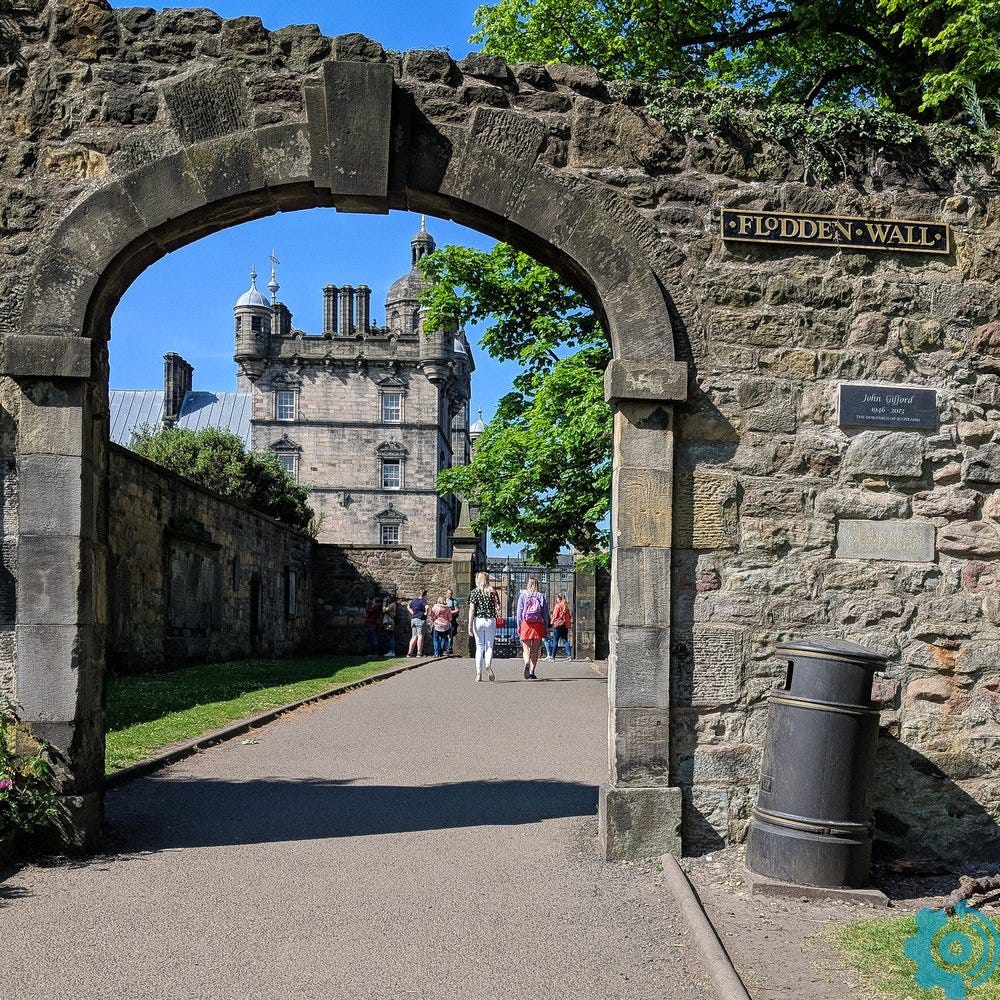
And bonus... if you subscribe, I'll be much closer to being able to have a less annoying URL for my youtube channel (baseline is 100 subscribers to get that)!!
8
Called the "water of life" by some, scotch whisky has a history almost as long as the water system in Edinburgh: maybe even older. The first record of scotch whisky is from 1494 from a royal tax record. Someone has to pay for those stoups and sedans.
And what goes into whisky? Water! And yeast and barley. I have a half-fermented idea that the water that goes into whisky doesn't have to be as cleaned..since it is then boiled and fermented. Right? Anyone a whisky drinker? A wee dram anyone?
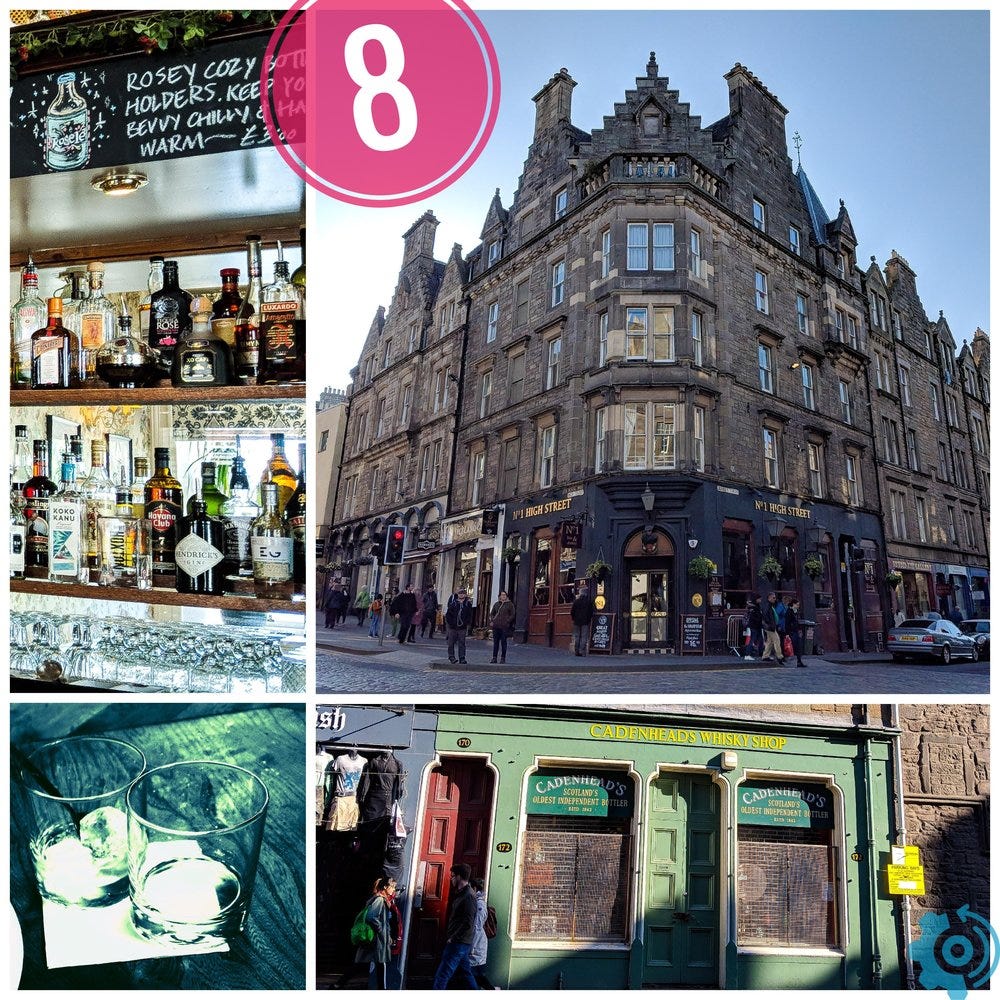
I went into Under the Stairs (which was a super cool place) and asked if I could get a "less smokey" one. The lady there laughed and said "we are two very different girls".
9
Today, the castle hill tank from 1674 has since been replaced by a more modern system.
There are three major reservoirs: Megget (1982), Talla (1899), and Fruid (1899).

Water is treated through filtration (for organics and inorganics), chlorine (disinfection), lime (pH balance), and orthophosphoric acid (used to reduce lead solubility since there are old lead pipes in some buildings).
10
Retrofit. Because the buildings are so old in Edinburgh, and the sanitation and water system came after their construction, each of the houses have been retrofitted for this "modern" technology. That includes drilling through the stone and attaching piping into the retrofitted bathrooms and kitchens.
When I come back there are several things I want to find:
The Comiston Spring House from 1676 (a spring box at Comiston View and Fox Spring Rise corner) which gathered the original 4 springs.
Fox well located on Fox Spring Crescent.
The Museum of Edinburgh with the original sculptures leading to the entrance of the spring box.
The old 19th c reservoirs at Harlaw, Threipmuir, Harperrig and Crosswood.
Lead pipes in the grounds of Hunter's Tryst Primary School... just kidding!! I am def NOT the person with the excavator in the yard!!
The aqueduct with today's water supplies from the Talla Reservoir, Tweedsmuir (with other supplies coming in from Meggat Water in the Ettrick Forest).
Walk along the Water of Leith
Thanks for joining me on my trip around the city!
...and Scottish Water, if you're listening, let me come work for you! ;)
Reading: mi tarea de espanol & many travel guides/blogs
Working: At a conference for ASCE EWRI listening to the groundwater and riverbank filtration sessions
Listening:
https://www.youtube.com/watch?v=f488uJAQgmw
Sources:https://www.edinburghnews.scotsman.com/news/how-mammoth-effort-brought-edinburgh-clean-water-1-3269319https://www.edinburghexpert.com/blog/castlehill-reservoir-and-edinburghs-water-supplywww.edinburgh.gov.uk/download/downloads/id/3281/soe_water_supplyhttps://www.capitalcollections.org.uk/http://www.scottish-places.info/features/featurefirst8675.htmlhttp://www.royal-mile.com/history/wellheads.htmlhttps://en.wikipedia.org/wiki/Scotch_whisky




